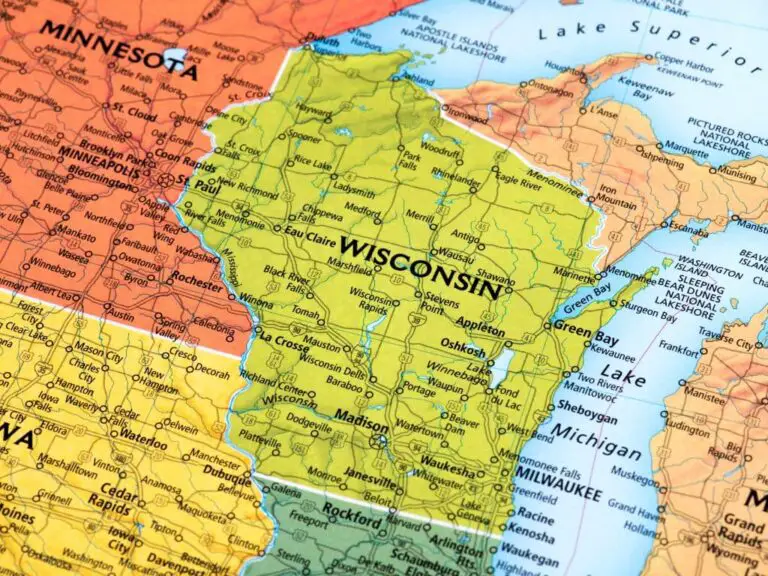What Is Section 202 Housing?
Section 202 Housing is a U.S. government program that provides affordable rental housing for low-income seniors aged 62 and above. Administered by the Department of Housing and Urban Development, it offers subsidies to reduce rent costs and provides supportive services like meal programs, health care, and transportation assistance within the housing facilities.
The primary goal of Section 202 Housing is to help seniors live independently by offering housing with supportive services. These services can include personal care assistance, meal services, transportation assistance, social activities, health monitoring, emergency response systems, and case management.

What Are the Eligibility Requirements for Section 202 Housing?
The eligibility requirements for the Section 202 program are as listed below.
- Age Requirement: At least one adult member of the household applying must be at least 62 years old.
- Income Limit: The household must make less than 50% of the Area Median Income (AMI) of the location of the property.
- Nonprofit Status: The Section 202 program is open to nonprofit organizations with a 501(c)3 or a 501(c)4 designation or a nonprofit consumer cooperative.
Residents at Section 202 properties typically pay rent equivalent to 30% of their adjusted income, with the remaining costs covered by federal funding provided through a renewable Project Rental Assistance Contract (PRAC).
What Are the Benefits of Section 202 Housing?
Here are some of the main benefits of Section 202 housing:
- It provides affordable housing specifically for low-income seniors aged 62 and older. To qualify, your income must be below 50% of the area median income.
- Rent is subsidized so residents pay no more than 30% of their adjusted gross income for rent and utilities. This makes Section 202 housing affordable even on a very limited income.
- Section 202 properties are designed with senior-friendly features like emergency call systems, grab bars in bathrooms, elevation lifts, and no-step entrances.
- Residents can receive supportive services like transportation, housekeeping, and meals on-site or through partnerships with local service providers. This allows seniors to age in place and maintain independence.
- Developments are sponsored by non-profit organizations but funded by the Department of Housing and Urban Development (HUD). This unique public-private partnership creates quality affordable senior housing.
- There are no minimum length of stay requirements. Residents can live in Section 202 housing as long as they meet income eligibility requirements.
- Since Section 202 serves low-income seniors specifically, residents often benefit from a built-in community with shared experiences.
Section 202 provides affordable, accessible, service-enriched housing to seniors in need. It allows low-income older adults to age with dignity.
What Are the Types of Supportive Services That Are Available Through Section 202 Housing?
Section 202 housing offers different types of supportive services to help seniors live independently and comfortably. Here are some of the supportive services available:
- Personal Care Assistance: Trained staff can help with activities of daily living, such as bathing, dressing, and grooming.
- Meal Services: Some Section 202 properties provide communal dining or meal delivery options for residents who may have difficulty cooking for themselves.
- Transportation Assistance: Transportation services may be available to help seniors get to medical appointments, grocery stores, and other necessary locations.
- Social Activities: Many Section 202 residences offer recreational programs and social events to keep residents engaged and connected.
- Health Monitoring: Medical professionals or trained staff can assist with medication management and monitoring health conditions.
- Emergency Response Systems: In case of emergencies, support staff can be alerted through systems installed in the residence.
- Case Management: Seniors can receive assistance in connecting with community resources and accessing healthcare services.
How Much Does Section 202 Housing Cost?
Section 202 rents are income-based, meaning the lower your income, the lower your rent payment will be. Specifically, tenants pay whichever is higher: 30% of adjusted monthly income, 10% of total monthly income without adjustments, or any welfare rent from an agency.
Since Section 202 serves seniors, household sizes tend to be small – usually just 1 or 2 people. The average tenant is a single woman around age 74, with a total monthly income of about $1,050. Given the income-based formula, this results in average monthly rents of around $300.
To determine the rent amount, the housing provider first calculates adjusted monthly income. This starts with total gross income, then subtracts any income exclusions and allowable deductions. Common deductions include $400 for elderly households and medical expenses. The adjusted annual income is divided by 12 to reach monthly adjusted income.
Section 202 housing provides quality affordable housing to seniors in need. Rents are income-based and average around $300 per month. The rent formula ensures housing remains affordable based on each individual’s financial situation.
How Is Rent Calculated for Section 202 Housing?
Rent for Section 202 housing is calculated based on several factors.
The rent amount is determined by the highest of three possible calculations:
- 30% of the household’s adjusted monthly income,
- 10% of the household’s gross monthly income, or
- the portion of welfare assistance that is specifically designated for housing.
In terms of monetary value, the average monthly rent paid for a unit under Section 202 is approximately $300. However, eligibility for this program requires that an elderly individual’s household income be at or below 50% of the area median income (AMI).
How to Apply for Section 202 Housing
To apply for Section 202 Housing, follow these steps:
- Check your eligibility: Make sure you or someone in your household is at least 62 years old and has a household income at or below 50% of the area median income.
- Gather necessary documents: Get important documents ready, such as proof of age, proof of income, and identification.
- Find a property: Look for Section 202 Housing properties in your area that are accepting applications.
- Contact the property: Reach out to the property management office to find out if they have any available units and if they are accepting applications.
- Complete the application: Fill out the application form provided by the property management office. Make sure to provide accurate information and include all required documents.
- Submit your application: Return the completed application along with any necessary supporting documentation to the property management office within the specified deadline.
- Follow up on your application: After submitting your application, you may need to wait for a response from the property management office. If you haven’t heard back after a certain period, feel free to reach out and inquire about the status of your application.
What Documents Do You Need to Apply for Section 202 Housing?
To apply for Section 202 housing, you will need to gather some important documents. Here are the documents you will need:
- Identification Proof: You will need a valid government-issued identification document such as a driver’s license or passport.
- Social Security Number: You will need to provide your Social Security number.
- Income Verification: You will need to show proof of your income, such as pay stubs, bank statements, or documentation from government assistance programs.
- Asset Information: You may be required to provide information about your assets, including savings accounts, retirement accounts, and property ownership.
- Medical Records: Some residences may require medical documentation or proof of disability if you have specific health needs.
- Rental History: You may need to provide rental history information, including previous addresses and contact information for landlords.
How Does the Selection Process Work for Section 202 Housing?
The selection process for Section 202 Housing works like this:
- You need to meet the eligibility requirements for Section 202 Housing.
- Fill out and submit an application form.
- Your application will be reviewed to determine if you qualify for the program.
- If your application is accepted, you will be placed on a waiting list.
- Once a unit becomes available, you will be notified and given the opportunity to accept or decline the offer.
- If you accept the offer, you will undergo a screening process, which may include a background check and verification of income and assets.
- If you pass the screening process, you will sign a lease agreement and move into your new Section 202 Housing unit.
What Are the Challenges of Living in Section 202 Housing?
Living in Section 202 housing comes with its own set of challenges. One major challenge is the limited funding for the program, which can lead to a lack of resources and support services.
This means that not all residents may have access to the assistance they need, such as help with daily activities or medical care.
Another challenge is the high demand for Section 202 housing, which often results in long waiting lists. This can make it difficult for seniors to secure a spot in these affordable housing units and may mean they have to wait for an extended period before being able to move in.
The quality of life in Section 202 housing can also vary depending on factors like location and management. Some properties may be well maintained and offer a safe and comfortable environment, while others may have issues with maintenance or safety concerns.
Improving program efficiency is also an ongoing concern for Section 202 housing. With limited funding and increasing demand, there is a need to find ways to better allocate resources and ensure that eligible seniors are able to access this type of affordable housing.
Overall, while Section 202 housing provides important support for low-income elderly individuals, it does come with challenges related to funding limitations, high demand, variable quality of living conditions, and program efficiency.
What Are the Responsibilities of a Tenant in a Section 202 Property?
As a tenant in a Section 202 property, it is important to understand your responsibilities. Here are some things you should keep in mind:
- Paying rent on time: You must pay your rent by the due date every month. This helps to ensure that the property can continue to provide affordable housing for all residents.
- Taking care of your unit: It is your responsibility to maintain your living space and keep it clean and tidy. Report any maintenance issues or repairs needed to the management as soon as possible.
- Following property rules: Every Section 202 property has specific rules and guidelines that tenants must follow. These may include noise restrictions, pet policies, and smoking regulations. Adhering to these rules helps create a safe and comfortable living environment for everyone.
- Respecting neighbors: Being considerate of your neighbors is essential in maintaining a harmonious community. Keep noise levels down, be mindful of shared spaces, and treat others with respect.
- Participating in supportive services: Section 202 housing offers supportive services designed to help elderly residents live independently. Take advantage of these services to enhance your quality of life and well-being.
- Communicating with management: If you have any concerns or questions, don’t hesitate to reach out to the management team at your Section 202 property. They are there to assist you and address any issues that may arise.
What Are the Responsibilities of Landlords in a Section 202 Property?
Landlords in Section 202 properties have important responsibilities to ensure the well-being and comfort of their tenants. Here are some of the key responsibilities they have:
- Maintain the property: Landlords must keep the building and individual units in good condition, ensuring that repairs are carried out promptly.
- Provide support services: In certain Section 202 properties, landlords are required to offer supportive services such as transportation assistance, meal programs, and health monitoring.
- Ensure safety: Landlords must take measures to ensure a safe living environment by maintaining working smoke detectors, well-lit common areas, and secure entryways.
- Respect tenant privacy: Landlords should respect the privacy of their tenants and only enter their units for necessary inspections or repairs with proper notice.
- Address complaints: It is the responsibility of landlords to address tenant complaints promptly and resolve any issues related to maintenance or safety.
- Adhere to fair housing laws: Landlords must follow fair housing laws and treat all tenants equally without discrimination based on factors such as race, religion, or disability.
- Provide clear communication: Landlords should communicate important information effectively with tenants regarding lease terms, rent payments, and any changes in policies or services.
- Foster a sense of community: Encouraging a sense of community among tenants by organizing social activities or providing communal spaces can contribute to a positive living experience.
- Follow rent regulations: Section 202 properties often have restrictions on rent increases and income eligibility requirements that landlords must adhere to.
- Cooperate with HUD inspections: Finally, landlords should cooperate with inspections conducted by the U.S. Department of Housing and Urban Development (HUD) to ensure compliance with program guidelines.
How Can You Find Available Section 202 Properties in Your Area?
Looking for available Section 202 properties in your area? Here’s how:
- Contact your local housing authority or HUD office for information on Section 202 housing options.
- Utilize online listing platforms like Apartments.com and Zillow to search for senior housing options that may include Section 202 properties.
- Reach out to local senior centers or community organizations that provide assistance with housing resources. They may have information on available Section 202 properties.
- Attend housing fairs or workshops in your community, where you can gather information about Section 202 housing and connect with property managers or landlords who offer these types of units.
Difference Between Section 8 and Section 202 Housing
Section 202 and Section 8 are both housing assistance programs administered by the U.S. Department of Housing and Urban Development (HUD). However, they are designed to serve different populations and have different benefits and requirements.
| Section 8 | Section 202 | |
| Target Population | General population, including low-income individuals and families | Primarily seniors and some people with disabilities |
| Type of Assistance | Offers financial assistance to help with the cost of housing. This includes tenant-based and project-based subsidies. | Provides affordable housing with supportive services. This is primarily focused on developing affordable housing. |
| Program Origin | Began as a more general program available to a wider range of people | Began in the 1960s with a focus on housing for the elderly and disabled |
| Funding | Funded through general HUD appropriations | Funded by the Section 811 program for persons with disabilities |
While both programs aim to make housing more accessible and affordable, they function differently and cater to different needs. If you’re a senior, Section 202 might be the better fit for you because it’s specifically designed to support your needs.
What Is the Future of Section 202 Housing?
The future of Section 202 housing is uncertain due to potential funding cuts and changes in financing. Recently, there has been a proposed 15% cut to Section 202 funding, which could have a negative impact on older adults.
This shows a lack of regard for their needs. However, it’s important to note that over the next 20 years, there will be a significant increase in households of older adults.
Despite these challenges, the Section 202 program plays an essential role in expanding the supply of affordable housing with supportive services for seniors. It provides capital advances that cover expenses related to housing construction.
This helps ensure that older adults have access to safe and comfortable homes.
In conclusion, while there may be obstacles ahead for Section 202 housing, it remains crucial in meeting the housing needs of our aging population. It’s vital that we advocate for continued funding and support to ensure that all seniors have access to affordable and supportive housing options.
Conclusion
Section 202 Housing is a federal program that provides affordable rental housing for low-income elderly individuals. It aims to expand the supply of affordable housing with supportive services for seniors and individuals with disabilities, allowing them to live independently.
Through partnerships with non-profit organizations, Section 202 Housing helps address the housing needs of vulnerable populations, ensuring they have access to safe and decent homes.
This program plays a crucial role in providing secure and affordable rental options for older adults in need.






